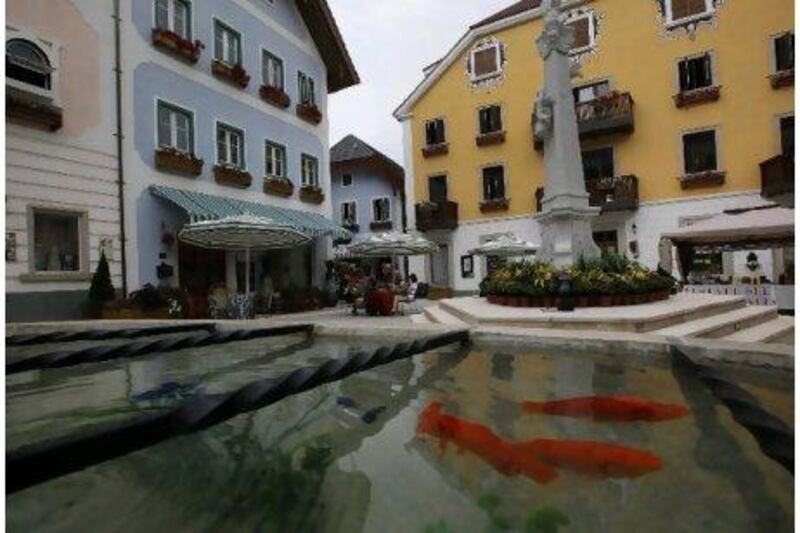HUIZHOU // A group of Austrians whose scenic mountain village has been copied down to the statues by a Chinese developer attended Saturday’s opening in China for the high-end residential project but were still miffed about how the company did it.
Minmetals Land Inc.’s replica of Hallstatt, a quaint Austrian alpine hamlet, is located in subtropical southern China.
The original is a centuries-old village of 800 people and a UNESCO heritage site that survives on tourism. The copycat is a housing estate that thrives on China’s new rich. In a China famous for pirated products, the replica Hallstatt sets a new standard.
The Chinese Hallstatt features a church spire, a town square ringed by pastel-colored buildings and angel statues. They’re among architectural flourishes inspired by the original.
Members of the Hallstatt delegation said they were proud to be copied but also disappointed with the way it was done.
“They should have asked the owners of the hotel and the other buildings if we agree with the idea to rebuild Hallstatt in China, and they did not,” hotel owner Monika Wenger said ahead of the opening ceremony. “And that was a big problem we had with this project here.”
People in Hallstatt first learned a year ago of Minmetals’ plan when a Chinese guest at Wenger’s hotel who was involved with the project inadvertently spilled the beans. Minmetals staff had been taking photos and gathering data while mingling with tourists, raising suspicions among villagers.
Minmetals Land is the real estate development arm of China Minmetals Corp., China’s largest metals trader.
Wenger said she was “disappointed” the company didn’t ask permission.
Mayor Alexander Scheutz, who signed a cultural exchange agreement Saturday with the new Hallstatt, was more diplomatic, saying “we are very proud.”
While construction was continuing at the Chinese project, located in Guangdong province’s Huizhou city, about 60 kilometers (100 miles) northeast of Hong Kong, the site was already open to visitors.
But some were skeptical the copycat version would ever match the beauty of the original, a scenic jewel with hill-hugging chalets, elegant church spires and ancient inns all reflected in the deep still waters of an Alpine lake, about 300 kilometers (186 miles) west of Vienna.
“Chinese architecture is very characteristic and stylish,” said Zhong Ping, a Huizhou resident. “Just work on your own style. Why do you have to copy others? Even the flowers are fake – I can tell they are fake at first glance.”





